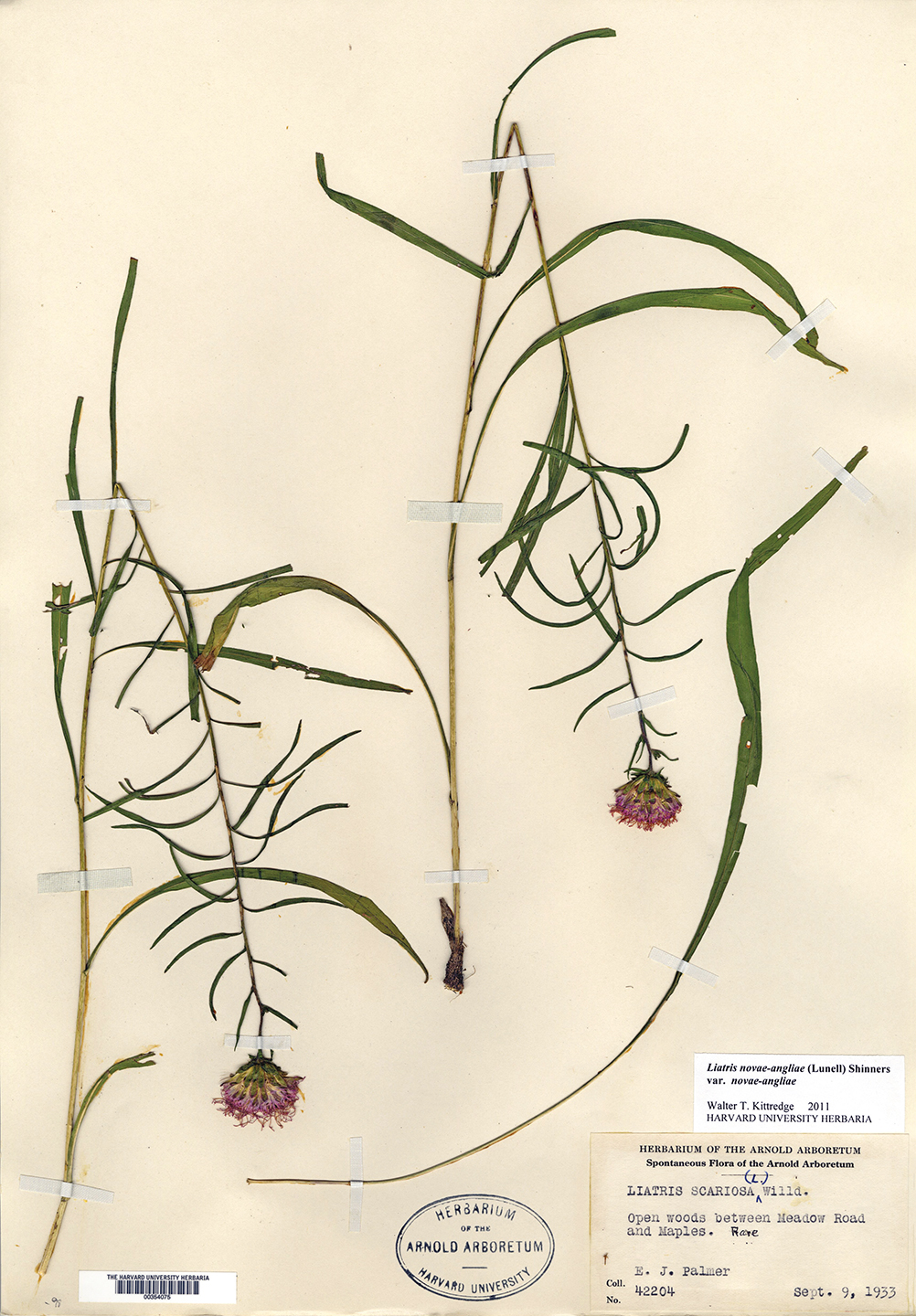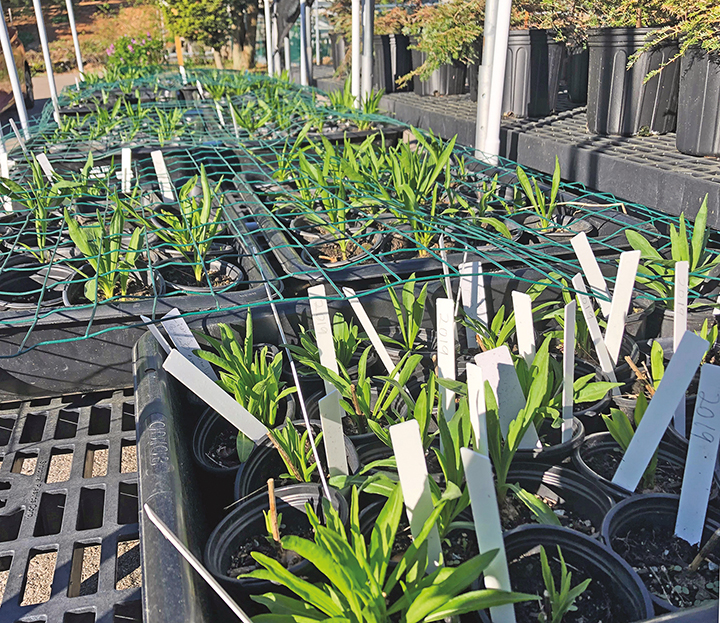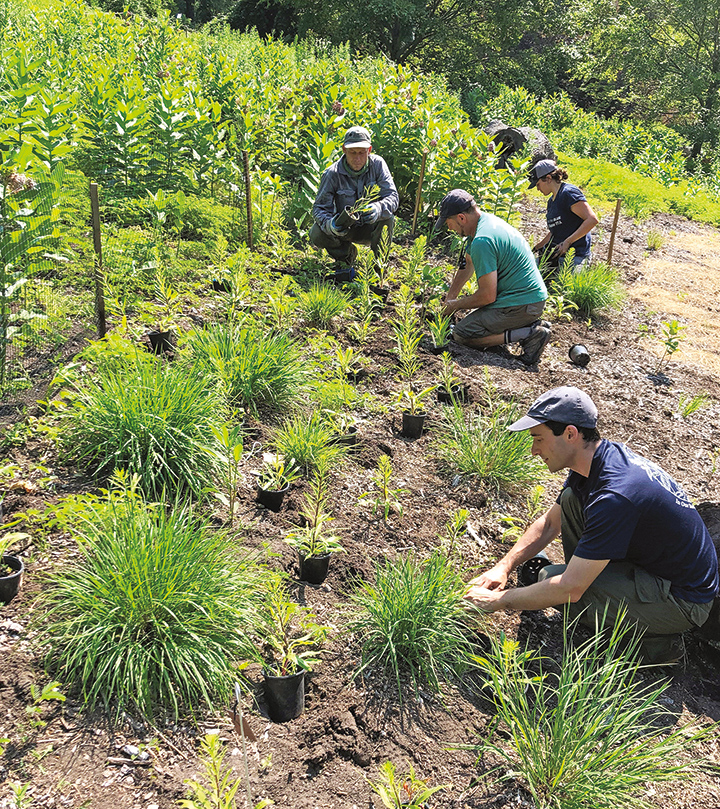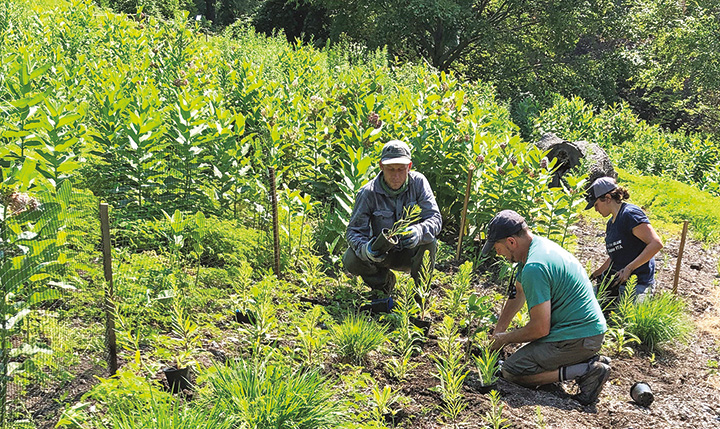Restoring wild populations of New England blazing star in Boston
The Arnold Arboretum is dominated by trees and other woody plants that by and large originated elsewhere— primarily from wild, temperate habitats around the globe. But staff have historically preserved areas of the Arboretum landscape where native understory plants are encouraged to grow spontaneously and by design, and in recent years we have begun collecting and reintroducing herbaceous species that were once common on our grounds. Like our accessioned trees, these plants may be immediately familiar and plentiful in the wild, or threatened and quite rare.
One example of a species poised for a comeback in our landscape is New England blazing star, a plant reintroduced through a collaboration with Zoo New England. For the Arboretum, this species is significant to both history and conservation—the last confirmed wild population in all of Suffolk County was documented in our landscape almost 90 years ago.

New England blazing star (Liatris novae–angliae) is a regional endemic perennial in the aster family, found throughout the New England states as well as New York. It is the region’s only native species of blazing star and is categorized as either rare or uncommon in every state it occurs naturally. Their beautiful, purple “star” flowers burst open in late summer and early fall, attracting a variety of pollinators including monarch butterflies.
For centuries, the sandy soils found along the coastline, barrens, and expansive fields surrounding Boston provided ample habitat for blazing star. As a disturbance adapted species, it was likely even more abundant during the pre-colonial times in which controlled burns were a common land management technique by indigenous peoples. However, blazing star populations across the state plummeted as habitat disruption and urbanization claimed more
and more of the available land.
In Suffolk County, one place that blazing star held out was the Arnold Arboretum. During the early 1900s, the Arboretum’s sandy soils and acres of open pasture—interspersed with newly planted trees—provided ample refuge. Even so, as the canopy developed overhead and competition increased with other vegetation on the ground, blazing star began disappearing in our landscape as well.
Most declining species fade without the dignity of acknowledgement. However, in 1933, Arboretum staff member Ernest Palmer observed New England blazing star growing in open woods near the present-day maple collection. Known for his extensive study and documentation of the Arboretum’s spontaneous woody and herbaceous vegetation, Palmer preserved a section of the plant for the Arboretum’s Herbarium of Cultivated Plants. Though he didn’t know it at the time, Palmer had not only documented the last confirmed sighting of New England blazing star at the Arboretum, but also the last confirmed instance of the plant growing wild in all of Suffolk County.

Today, only one remnant wild population of New England blazing star remains in northeastern Massachusetts. Fortunately, Russ Hopping, Chief Ecologist for The Trustees of Reservations, collected seed from a population near Boxford, MA before it disappeared. Dr. Bryan Windmiller and his staff at Zoo New England now use this wild-sourced seed to reintroduce the plant. Working under permit for the Massachusetts Division of Fisheries and Wildlife (MassWildlife), Zoo staff propagate seedlings and plant them in historically relevant sites across the state.
In fall 2020, the Arboretum began collaborating with the Zoo’s blazing star conservation initiative. Our plant production staff at the Dana Greenhouses overwintered several hundred blazing star seedlings in our cold storage facilities and nurtured them throughout spring 2021. This helped the Zoo’s Conservation Department cultivate many more specimens than would have been possible otherwise. In June, Zoo staff retrieved 80 plants for use at various field conservation sites. Meanwhile, the Arboretum retained 120 for our own reintroduction effort, and we plan to continue this collaboration with the Zoo in coming years.
The plants earmarked for our landscape were planted with both history and ecology in mind. Visitors can find several groupings in the mulched beds adjacent to Meadow Road, the pathway leading from Arborway Gate to the Bradley Rosaceous Garden. This is the closest suitable habitat to where Palmer collected his voucher nearly nine decades ago. Others were planted in the beech collection, an area staff are developing into a native plant and pollinator garden while new beech saplings await transplanting from our nurseries.

The reintroduction of New England blazing star at the Arboretum illustrates several important facets of plant conservation. First, this project underscores the value of diligent research and documentation. On a local scale, without Palmer’s keen eye and subsequent herbarium voucher, we may never have known that New England blazing star once grew in our landscape. Broadening the scope statewide, ongoing work by Hopping, Windmiller, and MassWildlife ensure that Massachusetts’ rare and endangered plants are well documented and thoughtfully preserved.
